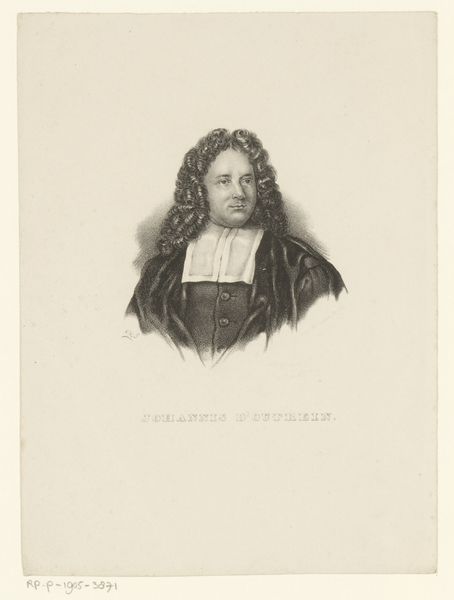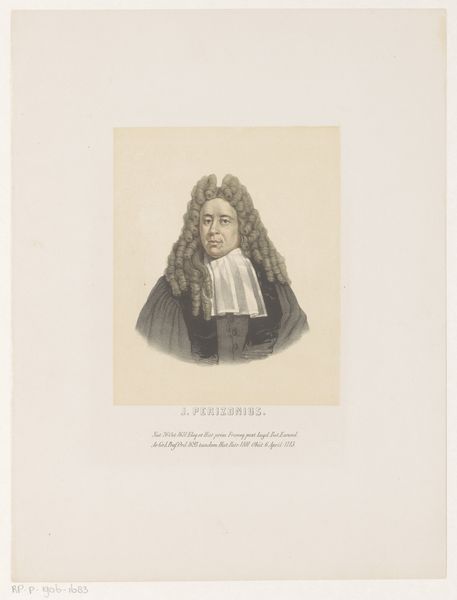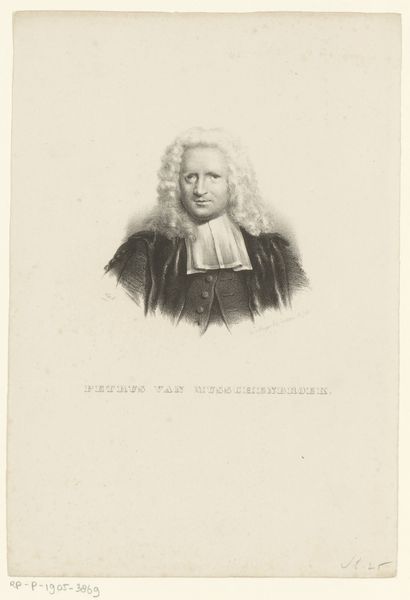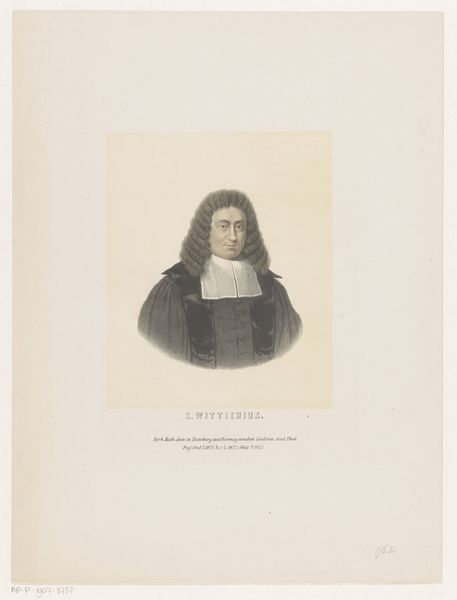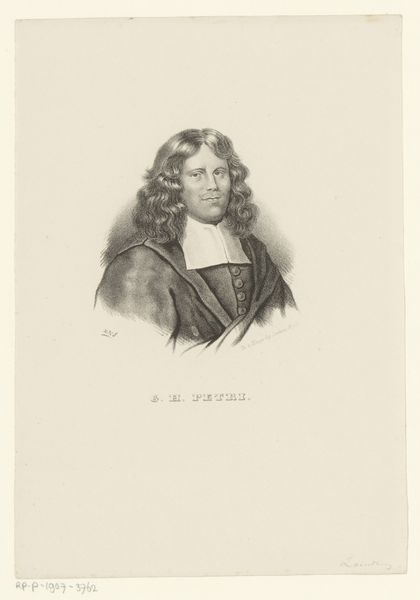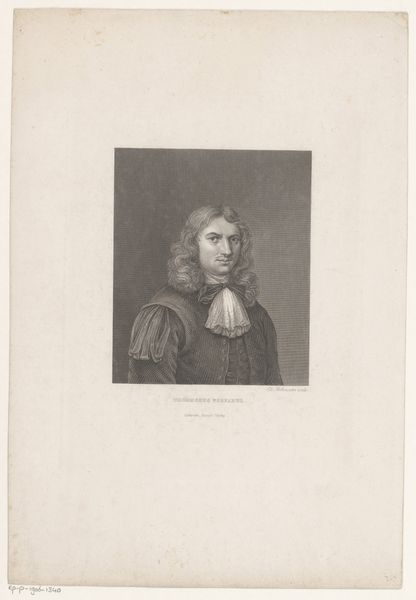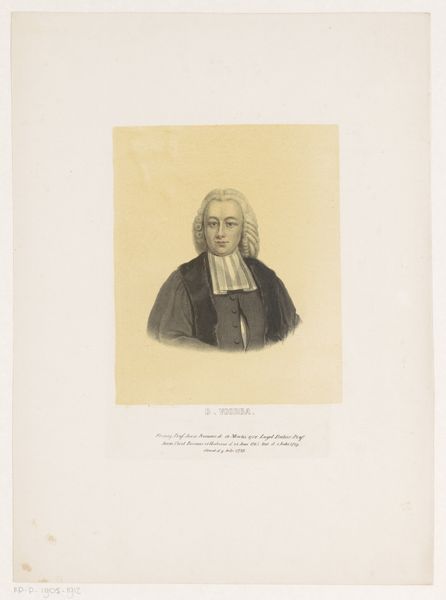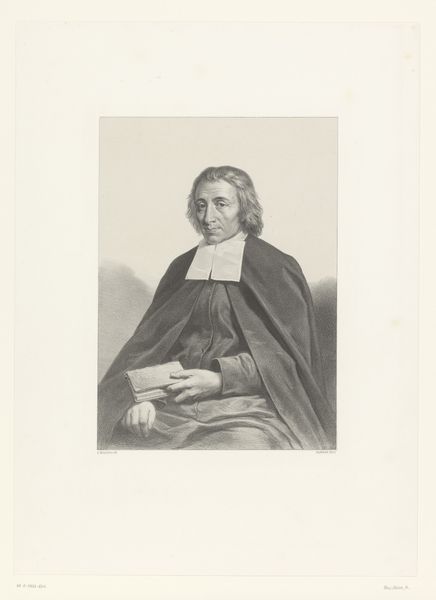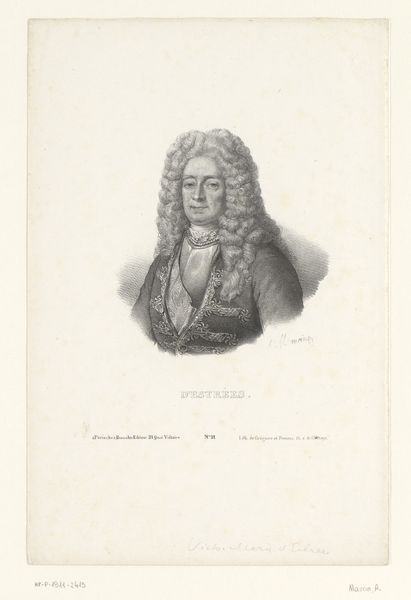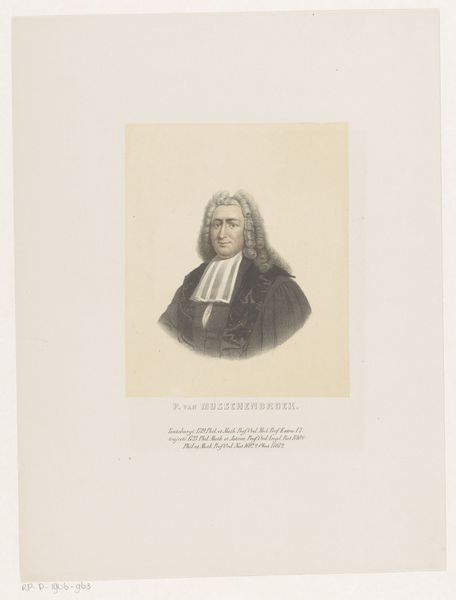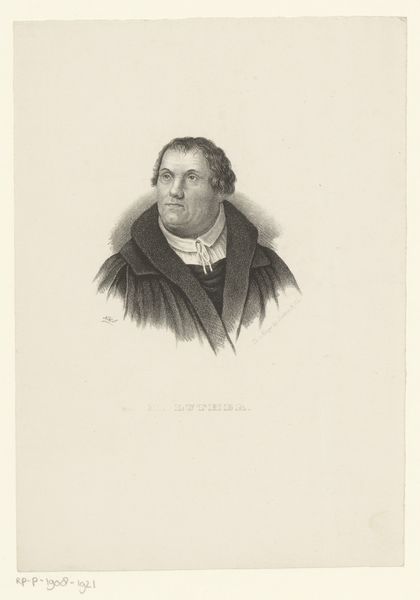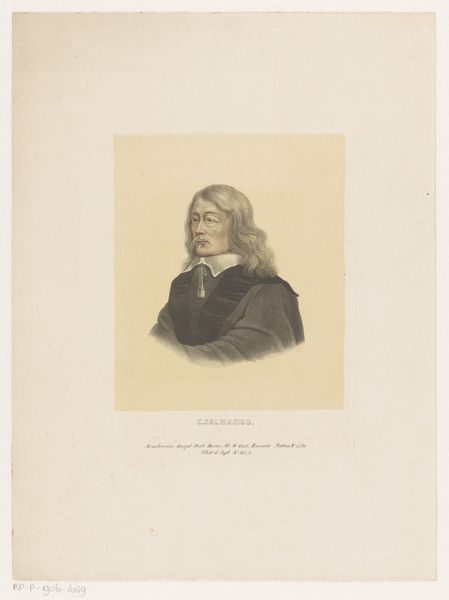
drawing, pencil
#
portrait
#
pencil drawn
#
drawing
#
16_19th-century
#
pencil sketch
#
pencil drawing
#
pencil
#
realism
Dimensions: height 225 mm, width 160 mm
Copyright: Rijks Museum: Open Domain
Editor: This is a portrait of Wilhelmus à Brakel, dating from around 1830-1845, created by N.M. Schild, using pencil. I'm struck by how…reserved he seems. It's a very formal, almost severe depiction. What do you see in this piece? Curator: I see a visual embodiment of a specific cultural memory. That stiff formality you perceive speaks volumes. Think about the tradition of portraiture and its symbolic weight. Consider the sitter: most likely of some status and influence. It's not merely a likeness, is it? Editor: No, of course not. Portraits were often commissioned to convey specific ideas. Curator: Precisely. Notice how the details, the costume, even the rendering of the face, work together to project an image of piety and authority. Do you notice anything symbolic about the robe or collar? Editor: The dark robe and the white collar. That’s very telling of the church and priesthood. But what feeling would it bring back in time, I wonder? Curator: Likely feelings of safety, devotion, trust, a shared religious continuity... This image links the sitter to a legacy, it perpetuates cultural values that went far beyond this one individual’s persona. We carry these meanings in our collective visual language. Editor: So even something as seemingly simple as a portrait drawing is steeped in cultural history and symbolism. I’ll never look at a portrait the same way again. Curator: Exactly! Recognizing those symbols allows us to decode the artwork.
Comments
No comments
Be the first to comment and join the conversation on the ultimate creative platform.
